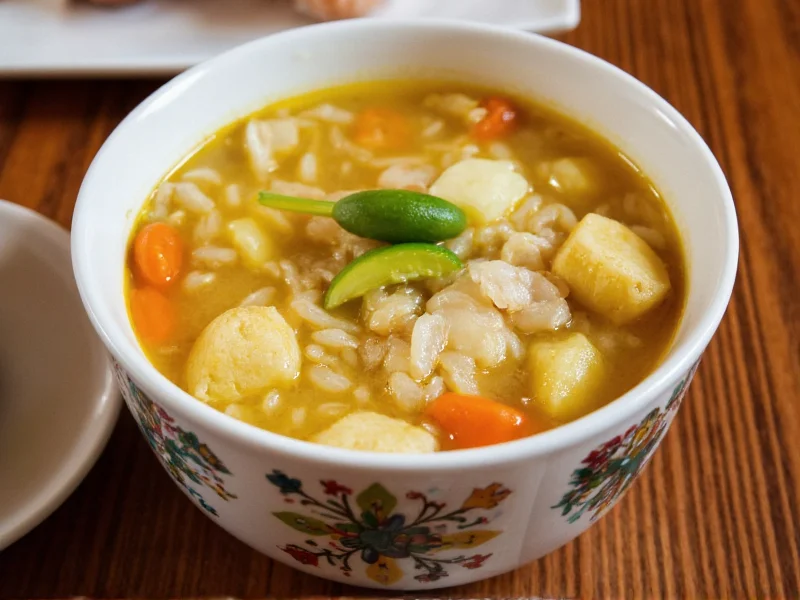A classic rice soup recipe requires just 6 basic ingredients: 1 cup rice, 8 cups broth, 1 onion, 2 carrots, 2 celery stalks, and 2 garlic cloves. Simmer vegetables for 15 minutes, add rinsed rice, and cook 20-25 minutes until tender. Season with salt, pepper, and fresh herbs. This easy rice soup recipe yields 6 servings in under 45 minutes with minimal prep work.
The Ultimate Guide to Perfect Rice Soup
Creating a comforting bowl of rice soup requires understanding the delicate balance between broth concentration and rice texture. This versatile dish has sustained cultures worldwide for centuries, from Chinese congee to Spanish sopas de arroz. Unlike complex stews, a proper rice soup recipe focuses on clean flavors and silky consistency that soothes without overwhelming.
Essential Ingredients for Homemade Rice Soup
Quality ingredients make the difference between bland and brilliant. For the best rice soup recipe, select:
| Ingredient | Quantity | Professional Tip |
|---|---|---|
| Long-grain white rice | 1 cup (uncooked) | Rinse thoroughly to remove excess starch for clearer broth |
| Homemade chicken or vegetable broth | 8 cups | Low-sodium preferred for better flavor control |
| Yellow onion | 1 medium, diced | Sweat slowly to build flavor foundation |
| Carrots | 2 medium, sliced | Cut uniformly for even cooking |
| Celery | 2 stalks, chopped | Include leaves for extra aroma |
| Fresh parsley | 3 tbsp, chopped | Add at serving for bright finish |
Step-by-Step Cooking Method
Follow these professional techniques for restaurant-quality results:
- Sweat aromatics: Cook onions, carrots, and celery in 1 tbsp olive oil over medium heat for 10-12 minutes until softened but not browned
- Add liquid: Pour in broth and bring to gentle simmer (avoid boiling)
- Incorporate rice: Stir in rinsed rice and cook uncovered for 20-25 minutes
- Monitor texture: Stir occasionally to prevent sticking; rice should be tender but distinct
- Finish: Remove from heat, add salt/pepper to taste, and rest 5 minutes before serving
Achieving Perfect Rice Soup Texture
The most common mistake in any rice soup recipe is ending with mushy grains or cloudy broth. Professional chefs recommend:
- Rice selection: Long-grain varieties like jasmine or basmati maintain structure better than short-grain
- Temperature control: Maintain gentle simmer (180-200°F), never rapid boil
- Addition timing: Add rice to already hot broth to prevent starch shock
- Resting period: Let soup sit covered for 5 minutes after cooking for even absorption
Popular Variations for Different Diets
Adapt this basic rice soup recipe to suit various preferences:
Chicken Rice Soup
Add 2 cups shredded cooked chicken during last 5 minutes of cooking. Include 1 tsp ginger and 2 sliced scallions for authentic flavor. This chicken rice soup recipe provides 25g protein per serving.
Vegetable Rice Soup
Boost nutrition with 1 cup diced zucchini, ½ cup peas, and 1 diced tomato added with the rice. Use vegetable broth and finish with lemon zest for a healthy rice soup recipe option.
Gluten-Free Preparation
Naturally gluten-free when using pure broth. Verify broth labels as some contain hidden gluten. This makes an excellent gluten-free rice soup recipe for sensitive diets.
Common Mistakes to Avoid
Even experienced cooks encounter issues with rice soup preparation. Prevent these problems:
- Mushy rice: Caused by overcooking or wrong rice variety. Cook just until tender
- Cloudy broth: Results from boiling too vigorously or not rinsing rice
- Bland flavor: Fix by properly sweating vegetables and using quality broth
- Thickened overnight: Rice continues absorbing liquid; add broth when reheating
Storage and Reheating Guidelines
Rice soup makes excellent leftovers with proper handling:
- Cool completely within 2 hours of cooking
- Store in airtight container for up to 4 days
- Freeze portions for up to 3 months
- Reheat gently with additional broth to restore consistency
- Never microwave rice soup from frozen—thaw first
Why This Recipe Works
This rice soup recipe succeeds because it respects the ingredient hierarchy. The broth forms the flavor foundation, vegetables add texture and sweetness, while rice provides comforting substance without dominating. Unlike quick-fix versions, this method develops flavors gradually for a balanced result that satisfies without heaviness. The technique works whether you're preparing a quick 30-minute rice soup recipe for weeknights or an elaborate version for special occasions.
Frequently Asked Questions
Can I use leftover rice in soup?
Yes, but add cooked rice during the last 5 minutes of cooking to prevent mushiness. Use 2 cups cooked rice instead of 1 cup uncooked. This leftover rice soup recipe adaptation works well for quick meals.
What's the best rice for soup?
Long-grain white rice like jasmine or basmati maintains texture best. Avoid sticky rice varieties. For gluten-free rice soup recipes, verify your rice is certified gluten-free if needed.
How do I prevent rice from absorbing all the broth?
Use the correct rice-to-broth ratio (1:8) and avoid overcooking. Store soup with extra broth separately to add when reheating. This technique ensures your rice soup recipe maintains perfect consistency.
Can I make rice soup in a slow cooker?
Yes, but add rice during the last hour of cooking. Slow cooker rice soup recipes require less liquid (6 cups instead of 8) since evaporation is minimal. Check texture frequently near the end.
Why does my rice soup become too thick overnight?
Rice continues absorbing liquid as it sits. Simply add additional hot broth when reheating to restore the original consistency. This happens with all authentic rice soup preparation methods.











 浙公网安备
33010002000092号
浙公网安备
33010002000092号 浙B2-20120091-4
浙B2-20120091-4